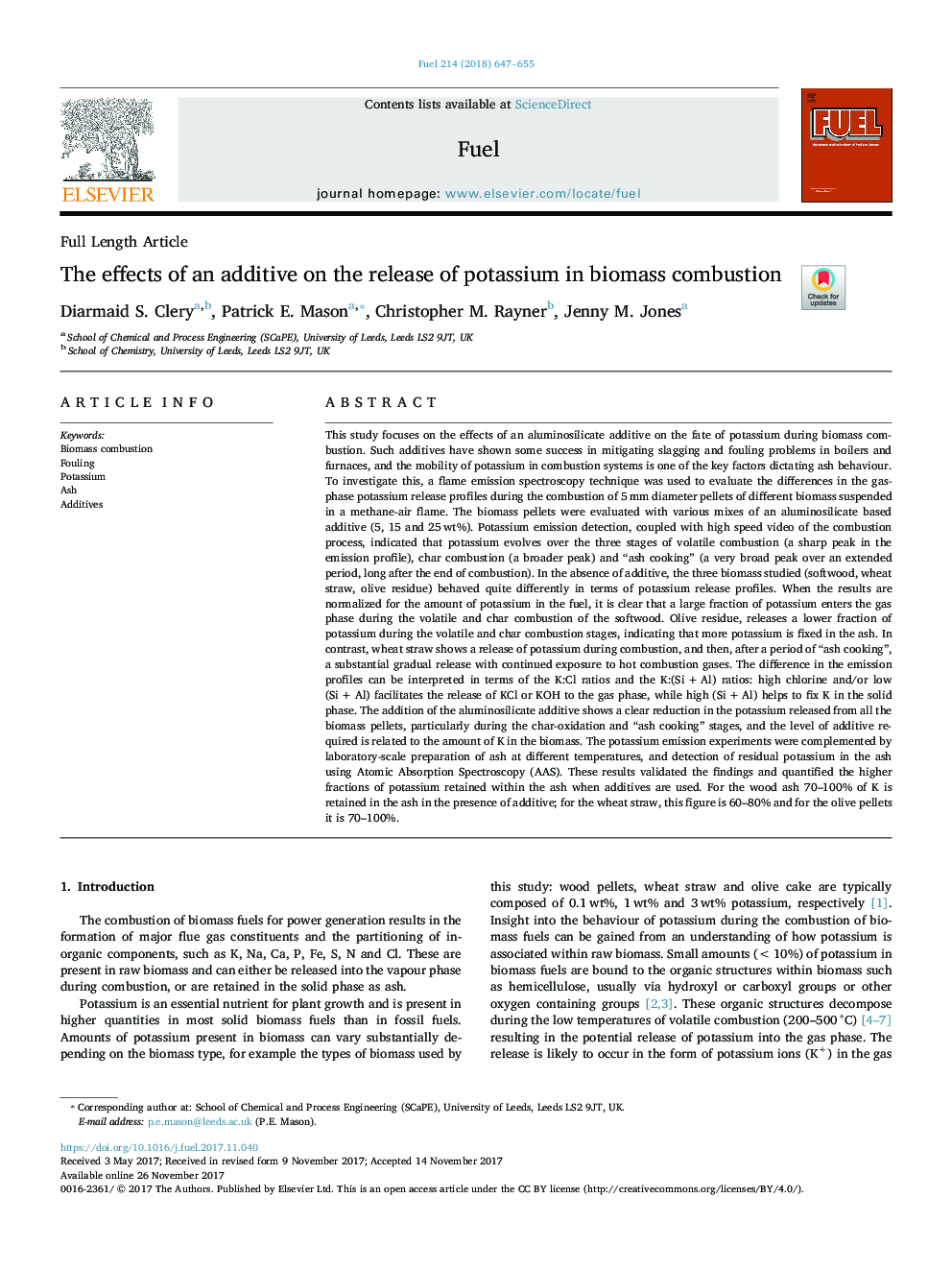| کد مقاله | کد نشریه | سال انتشار | مقاله انگلیسی | نسخه تمام متن |
|---|---|---|---|---|
| 6632491 | 1424950 | 2018 | 9 صفحه PDF | دانلود رایگان |
عنوان انگلیسی مقاله ISI
The effects of an additive on the release of potassium in biomass combustion
ترجمه فارسی عنوان
اثرات افزودنی بر انتشار پتاسیم در احتراق زیست توده
دانلود مقاله + سفارش ترجمه
دانلود مقاله ISI انگلیسی
رایگان برای ایرانیان
کلمات کلیدی
احتراق زیست توده، ریزش مو، پتاسیم، خاکستر، افزودنی ها،
موضوعات مرتبط
مهندسی و علوم پایه
مهندسی شیمی
مهندسی شیمی (عمومی)
چکیده انگلیسی
This study focuses on the effects of an aluminosilicate additive on the fate of potassium during biomass combustion. Such additives have shown some success in mitigating slagging and fouling problems in boilers and furnaces, and the mobility of potassium in combustion systems is one of the key factors dictating ash behaviour. To investigate this, a flame emission spectroscopy technique was used to evaluate the differences in the gas-phase potassium release profiles during the combustion of 5â¯mm diameter pellets of different biomass suspended in a methane-air flame. The biomass pellets were evaluated with various mixes of an aluminosilicate based additive (5, 15 and 25â¯wt%). Potassium emission detection, coupled with high speed video of the combustion process, indicated that potassium evolves over the three stages of volatile combustion (a sharp peak in the emission profile), char combustion (a broader peak) and “ash cooking” (a very broad peak over an extended period, long after the end of combustion). In the absence of additive, the three biomass studied (softwood, wheat straw, olive residue) behaved quite differently in terms of potassium release profiles. When the results are normalized for the amount of potassium in the fuel, it is clear that a large fraction of potassium enters the gas phase during the volatile and char combustion of the softwood. Olive residue, releases a lower fraction of potassium during the volatile and char combustion stages, indicating that more potassium is fixed in the ash. In contrast, wheat straw shows a release of potassium during combustion, and then, after a period of “ash cooking”, a substantial gradual release with continued exposure to hot combustion gases. The difference in the emission profiles can be interpreted in terms of the K:Cl ratios and the K:(Siâ¯+â¯Al) ratios: high chlorine and/or low (Siâ¯+â¯Al) facilitates the release of KCl or KOH to the gas phase, while high (Siâ¯+â¯Al) helps to fix K in the solid phase. The addition of the aluminosilicate additive shows a clear reduction in the potassium released from all the biomass pellets, particularly during the char-oxidation and “ash cooking” stages, and the level of additive required is related to the amount of K in the biomass. The potassium emission experiments were complemented by laboratory-scale preparation of ash at different temperatures, and detection of residual potassium in the ash using Atomic Absorption Spectroscopy (AAS). These results validated the findings and quantified the higher fractions of potassium retained within the ash when additives are used. For the wood ash 70-100% of K is retained in the ash in the presence of additive; for the wheat straw, this figure is 60-80% and for the olive pellets it is 70-100%.
ناشر
Database: Elsevier - ScienceDirect (ساینس دایرکت)
Journal: Fuel - Volume 214, 15 February 2018, Pages 647-655
Journal: Fuel - Volume 214, 15 February 2018, Pages 647-655
نویسندگان
Diarmaid S. Clery, Patrick E. Mason, Christopher M. Rayner, Jenny M. Jones,
